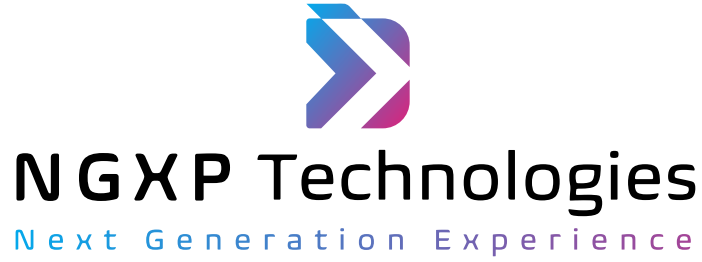What Are Azure Functions?
Azure Functions is a serverless compute service that lets you run small pieces of code (called “functions”) without worrying about infrastructure. These functions are triggered by events—such as HTTP requests, database updates, or messages from a queue—and automatically scale based on demand.
Key Features:
- Event-driven execution: Respond to triggers like HTTP calls, timers, or service bus messages.
- Automatic scaling: Handles thousands of concurrent executions without manual intervention.
- Pay-per-use pricing: You only pay for the time your code runs.
- Multi-language support: Write functions in C#, JavaScript, Python, PowerShell, and more.
- Deep Azure integration: Seamlessly connect with services like Cosmos DB, Event Grid, Logic Apps, and more.
Business Applications of Azure Functions
Azure Functions aren’t just for developers—they’re a strategic tool for digital transformation. Here are some powerful ways businesses are using them:
- Automating Business Processes
Functions can automate repetitive tasks such as:
- Sending emails or SMS notifications
- Generating and distributing reports
- Syncing data between systems
Example: A retail company uses Azure Functions to update inventory across multiple platforms in real time after a sale.
- Real-Time Data Processing
Functions can process and react to data streams instantly:
- IoT telemetry analysis
- Fraud detection in financial transactions
- Social media sentiment tracking
Example: A logistics firm uses Azure Functions to analyze GPS data from delivery trucks and optimize routes dynamically.
- Microservices Architecture
Functions are ideal for building microservices:
- Each function handles a specific business capability
- Easy to deploy, test, and scale independently
Example: An insurance company uses Azure Functions to calculate premiums based on customer data and risk models.
- Cost Optimization
With consumption-based pricing, you only pay for what you use:
- Ideal for unpredictable or seasonal workloads
- No need to provision or manage servers
Example: An e-commerce platform uses Azure Functions to handle traffic spikes during flash sales without overpaying for idle resources.
- Integration with SaaS and APIs
Functions can act as middleware between systems:
- Connect CRM, ERP, and third-party APIs
- Trigger workflows based on external events
Example: A healthcare provider uses Azure Functions to sync patient data between their booking system and electronic health records.
- Customer Support Automation
Enhance support operations with intelligent workflows:
- Auto-respond to tickets
- Route queries based on keywords or sentiment
- Escalate issues based on SLA rules
Example: A SaaS company uses Azure Functions to triage support emails and assign them to the right team automatically.
- Data Transformation and ETL
Perform lightweight ETL operations:
- Clean and normalize incoming data
- Convert formats (e.g., CSV to JSON)
- Load into data lakes or warehouses
Example: A marketing agency uses Azure Functions to process campaign data and feed it into Power BI dashboards.
- Invoice and Document Generation
Generate and send documents dynamically:
- Create PDFs, invoices, or reports
- Triggered by CRM updates or form submissions
Example: A consulting firm uses Azure Functions to generate monthly invoices and email them to clients automatically.
- Security and Compliance Monitoring
Monitor and respond to security events:
- Detect suspicious logins
- Enforce compliance policies
- Auto-remediate misconfigurations
Example: A fintech company uses Azure Functions to scan logs and alert the security team of unauthorized access attempts.
- Supply Chain Optimization
Improve supply chain visibility and responsiveness:
- Monitor shipment status
- Trigger reorders based on inventory levels
- Integrate with ERP systems
Example: A manufacturer uses Azure Functions to reorder raw materials when stock falls below a threshold.
- AI and ML Integration
Trigger AI models or cognitive services:
- Image recognition
- Sentiment analysis
- Predictive analytics
Example: A media company uses Azure Functions to flag toxic comments using Azure Cognitive Services.
- Healthcare Workflows
Streamline clinical and administrative tasks:
- Automate patient intake
- Alert doctors of critical lab results
- Sync data with EHR systems
Example: A clinic uses Azure Functions to notify physicians when lab results exceed safe thresholds.
- Travel and Booking Systems
Handle dynamic pricing and availability:
- Real-time seat or room availability
- Price recalculations
- Booking confirmations
Example: A travel agency uses Azure Functions to update hotel availability and pricing from partner APIs.
Getting Started with Azure Functions
You can build Azure Functions using:
- Azure Portal: Quick setup, no local tools needed
- Visual Studio / VS Code: Full development experience
- Azure CLI: Ideal for scripting and automation
Monitoring and diagnostics are built-in via Application Insights, making it easy to track performance and troubleshoot issues.
Why Azure Functions Matter for Your Business
- Speed: Rapid development and deployment
- Scalability: Automatically adjusts to demand
- Efficiency: Focus on business logic, not infrastructure
- Innovation: Enables experimentation and fast iteration
Final Thoughts
Azure Functions are more than just a developer tool—they’re a strategic enabler for modern businesses. By embracing serverless architecture, you can reduce costs, increase agility, and deliver better customer experiences.
Whether you’re automating workflows, integrating systems, or building scalable APIs, Azure Functions provide a powerful, flexible platform to bring your ideas to life.

